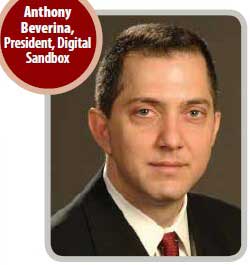- Training systems can simulate security scenarios, so responders are better prepared and make better decisions.
- Training can help to assess and validate plans and policies.
Training systems can simulate security scenarios, so responders are better prepared and make better decisions. Louis Marciani, Director of the National Center for Spectator Sports Safety and Security, worked on a training program for security staff and responders. The computer program simulates the environment of the stadium, as well as resources that affect decision making, such as fire trucks, hospitals, roads and different threats.
Consider a 5-pound IED explosive. With the simulation tool, the potential damage of the explosion to infrastructure and people could be measured. Then responders could begin to look at evacuations — which areas are going to be blocked or damaged? Which areas need to be cordoned off? How are people moved and how long will it take? Using the simulation, security personnel and first responders could work through various scenario s that could endanger people at a sports event or stadium.
s that could endanger people at a sports event or stadium.
Training can help to assess and validate plans and policies; clarify roles and responsibilities of those that are managing the incidents; and help security personnel and first responders practice evacuations. “They want to make sure that interagency communication and coordination are top of the line,” Marciani said. “They want to know what the gaps are and how to solve them. If you're going to have your team, and you want them to practice, then you want make sure you assess these capabilities.”
During game day, training is complete, and it is largely the task of the stadium security to keep abreast of new developments and respond to threats. New cloud-based threat collection apps collect and prioritize threats, making data more coherent. Previously, situational awareness was for the command center and security staff on patrol would radio in if they saw suspicious activity. With smartphone apps, new risks can be entered into the database directly for real-time updates.
How does this system work exactly? If somebody in the field notices a suspicious package, and logs that to their smartphone, this information goes back to the command center. Before it gets to the commander, it goes through a set of analytics that can correlate the proximity of that package to important infrastructure or events. The threat of the package can also be prioritized with key words, or other features established by the commander. So if a package is discovered next to the state capital, where there is a large protest going on, it is prioritized higher than a package found in an alley five blocks away from the stadium. It is about prioritizing what is important to the event, its proximity to important infrastructure and the time component.

This is useful to security staff during a large event, but also for first responders and others who need access to risk information. It can pull in weather information and 911 calls. “It allows people in charge of safety and security to collect and see information much more rapidly. It sultimately leads to broader visibility about what's going on, speed in reaction time and more focus of resources,” said Anthony Beverina, President, Digital Sandbox. “It saves money because it can direct resources to a hotspot of risks, instead of blanketing everywhere with security.”
Beverina expects social network data to be used in the future. The challenge to overcome is the vast amount of information on any social network, but it may be worth it. Early signs of social unrest have been found on these networks of late. “The key is going to be putting information into operational context through our analytics to figure out what is important,” he said. “If a protest is planned over social networking, which is often the way it's done, we want to find signs of that to figure out how that might impact us analytically, and then project that into operating context for the event.”
The security personnel at security events implement different security technologies. A closer relationship between the two helps to safeguard stadiums more effectively. “Tasking of video resources, ingest of feeds from intelligent video system, trip wires — that information becomes important dynamic information that is often missed because of the volume and proliferation of videos and sensor systems,” Beverina said. “We think that there's a huge future for us in working with technologies that allow us to integrate the feeds from those systems, but also provide some sort of tasking. If we see signs of an emerging incident at a location, we can task those systems to bring in the sensor information from a one block radius.”